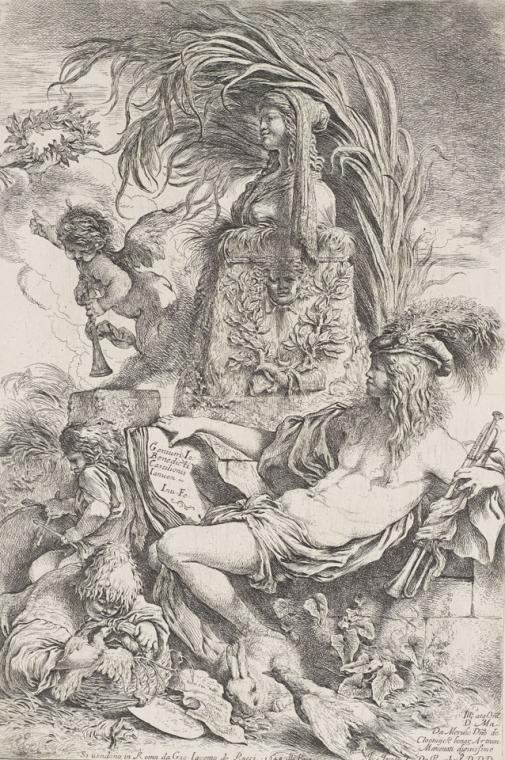Giovanni Benedetto Castiglione was a painter and draftsman who revolutionized the art world. Yet many have never heard of him. In fact, the Denver Art Museum exhibition refers to him as a “lost genius.” How could such an influential artist become lost? Who is this artist who fascinated curator Timothy J. Standring so much he dedicated much of his professional life to learning more about him?
We put together the following list of seven interesting facts that shed a little light on the artist and his life and times. Read below and then see the rare Castiglione works on view at the DAM from the Royal Collection Trust before the exhibition closes in November.
1. Castiglione was an inventor ahead of his time. He invented the monotype, a printing technique that produces one good image (hence “mono” type). Edgar Degas developed the same technique 200 years later to much more popularity.
2. Castiglione used oil paint on paper–a technique that was painting and drawing at the same time. The exhibition shows how in his early works he didn’t quite have control over how to handle the oil compared to his later works.
3. He was known as “the second Rembrandt.” Castiglione was the first Italian artist to be inspired by the Dutch master, who was only three years older. In the exhibition we display Castiglione’s works side-by-side with a Rembrandt etching from our collection, so you can see the comparison for yourself.
4. Standring is the world's foremost authority on Castiglione, and has been studying the artist for four decades. He became fascinated with him during graduate school in 1975. “My family doesn’t allow me to talk about Castiglione at home anymore. They’re tired of hearing about him,” Standring said.
5. Centuries before Kanye West, Castiglione proclaimed himself a genius. In fact one of the images in the exhibition is called The Genius of Castiglione and includes the words “The genius of Giovanni Benedetto Castiglione of Genoa, [who] invented and made [this].”

Giovanni Benedetto Castiglione, The Genius of Castiglione, dated 1648. Etching, platemark; overall: 372 x 250 mm. Royal Collection Trust / © Her Majesty Queen Elizabeth II 2015.
6. Castiglione’s biographer referred to him as “more feared [by arts patrons and his contemporaries] than loved.” Standring and his co-curator Martin Clayton, Head of Prints and Drawings at the Royal Collection Trust, believe Castiglione fell out of favor for two reasons: 1) He was ahead of his time. 2) “He was kind of a bad guy,” Standring said. After a wage dispute with a prominent Genoese patron, he once got angry and slashed the painting he made for them. That temperament and reputation makes it hard to maintain relationships with wealthy patrons.
7. Records show that Castiglione was rumored to have pushed his own sister off a roof! Standring found a trial document with depositions by other artists who alluded to his violence. “He may have reacted against a small skit in an improvisational play. In the play there were artists who were mocking possibly Castiglione’s inability to draw.” He appears to have fired an arquebus—a seventeenth-century firearm—at one of his detractors. He didn’t kill the man, fortunately, but the records suggest he left Rome in a hurry, ending up in the southern city of Naples.
Image: Giovanni Benedetto Castiglione, The head of an oriental, 1640s. Monotype with black oil and brown wash on brown-toned paper; overall: 317 x 236 mm. Royal Collection Trust / © Her Majesty Queen Elizabeth II 2015.

